Neighbourhood watch
A machine-learning census of America’s cities
from The Economist
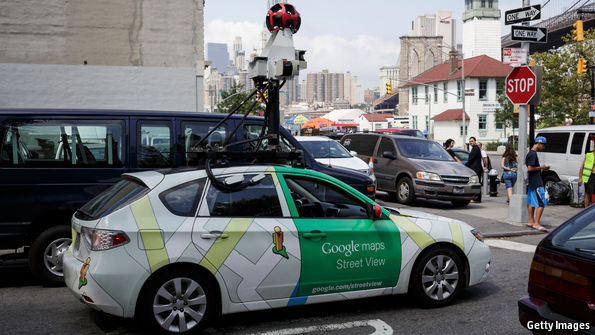
In 1686, Louis XIV came up with an idea to take a census and count France’s resources to control its towns and nobles better
Such surveys are expensive. But a team in Stanford came up with a cheaper, quicker method by using ML algorithms & data collected by Google
Using data from automotive websites, they trained ML algorithms which spotted 22m different cars on 50m images from Google Street View
Correlating the cars with data from traditional census, ML algorithm predicts education levels or political leanings from cars in an area
– The more detailed predictions are the less certain they become. As predictions rely on traditional surveys, it’s unlikely to replace them
+ The ML system is much cheaper and faster. It crunches through 50m images in two weeks. A human would take 15 years to do the same
+ Self-driving cars or Earth-imaging satellites produce even bigger data sets. This ML system could soon become a constantly updated one
| 2017/03/12
| Science & Technology, Summary
|
Joseph E. Stiglitz is one of my contemporary economist heroes. Others are Paul Krugman and Thomas Piketty.
I’m now reading:
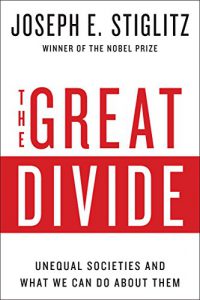
The Great Divide: Unequal Societies and What We Can Do About Them
by Joseph E. Stiglitz
The summary of ‘Prelude: Showing Cracks’
The book begins with the onset of the Great Recession. The first selection was published in Dec 2007 when US economy slipped into a downturn
The making of the Great Recession is intimately connected with the making of America’s great divide
After the tech bubble broke, US economy slid into recession in 2001. George W. Bush’s remedy was a tax cut especially aimed at the wealthy
Clinton had put off investments in infrastructure & education & helping the poor in the name of deficit reduction, for which I was worried
I was already concerned about the country’s growing inequality, and these inequitable tax cuts only made matters worse
Inequality weakens total demand & the economy. US’s inequality was moving money from the bottom to the top, and those at the top spent less
Naive market fundamentalists who believe markets are always efficient unleashed a bubble, and their monetary policies led to inequality
The Fed kept the economy churning with a policy of low interest rates and lax regulations, which worked only by creating a housing bubble
When the Fed raised interest rates in 2004, I anticipated the bubble would break, but it took 2 yrs for the full effects to be realized
The crisis was man-made and something that the 1 percent did to the rest of us, which itself is a manifestation of the great divide
| 2017/03/11
| Finance & Economics, Notes
|
The Next Step in Finance: Exponential Banking
from MIT Technology Review
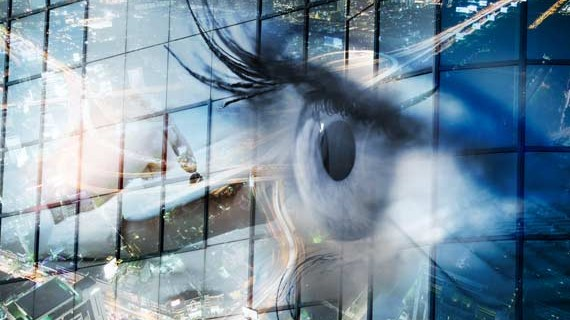
Banking has characteristics that make it a candidate for digitalization because its raw material is data, still has not suffered disruption
A new generation of clients demands agile, rapid or real time service that is competitively priced and in a safe environment, such as P2P
The technologies that make it possible to offer them already exist and pave the way for the future with enormous gains
Among those technologies are mobile computing; biometrics; cloud computing; and blockchain
Cognitive technologies improve user experiences, decision making, fraud detection and stress scenarios, accelerating customer digitalization
Who will occupy the center of these platforms? The “owner” will establish the rules and get the income and information from transactions
Conditions to succeed: 1) the exponential technologies; 2) consumer confidence through reputation and the absence of conflicts of interest
Regulations should balance the value and the risk of new digital proposals and create a competitive environment, which determins the future
| 2017/03/09
| Science & Technology, Summary
|
Using Virtual Reality Underwater Is Weird (but Fun)
from MIT Technology Review
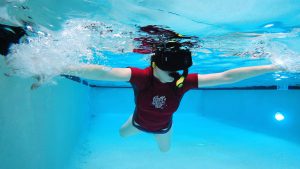
Stephen Greenwood and Allan Evans are making a VR headset that you can wear underwater
The first idea was to combine an isolation tank—where you float in a dark, silent room, alone—with virtual reality
They see it being developed for entertainment, scuba-diving simulations or physical therapy and for making VR feel much more captivating
Greenwood said “when you don’t have a sense of the ground or gravity in a radically different environment, it makes it much more believable”
A waterproof Android smartphone is attached to a 3-D-printed plastic, and audio comes from a MP3 player that uses bone conduction
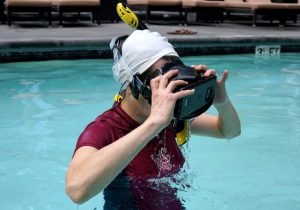
They’ve been trying it out at Greenwood’s apartment building, which has a pool. On a chilly afternoon, I jumped in and tried it out myself
The first experience had me floating above the International Space Station while David Bowie’s “Space Oddity” played. It was relaxing
The next was an underwater scene with colorful fish with peppy jazz music. Hanging out with the fish was a little more fun
The headset is about as advanced as Google Cardboard. There’s head orientation tracking, but no tracking of your head’s position in space
This is especially weird if you’re making an effort to swim in one direction because the visuals make you feel as if you’re not moving
In hopes of improving this, they are working on building a positional tracking system that can work underwater, using sound and magnetics
Despite the simplicity of the setup it was easy to forget about the outside world and just enjoy the weird virtual one below the surface
| 2017/03/01
| Science & Technology, Summary
|
Imagining the Future of VR at Google
from MIT Technology Review

Jessica Brillhart makes VR experiences e.g. World Tour, the first film made with Google’s Jump system, and “flatties,” conventional movies
I ask what I can do with VR technologies creatively, mediate between the engineers and creative people and make stuff in the process
One day, I visited an engineering team that was building a 360° camera and saw the first demo which showed their happy faces. I loved it!
Storytelling is the product of film whose camera is a disembodied eye which can show a world previously unknown to you
VR is an embodied medium and reminds us of experiences, which is the key to understanding what kind of storytelling could exist in VR
Felix & Paul is technically excellent in cinematics. Mr Mariančík created Sightline: The Chair. The idea is: the world evolves as you spin
I agree with an advice the creator of Myst gave me: VR users are curious about what they want to see and resist what you intend them to see
In Resonance, a young girl is poorly playing a violin. If you turn around you can see the reaction of her parents looking in at the doorway
I look to gaming for clues. You progressively gain strength and get to the boss levels. I believe you have to create similar cadences in VR
People will use VR to record home videos. It is going to be interesting to see what happens when we aren’t able to forget anything anymore
VR is its own medium. It will not supplant film and will not hurt any other medium. Something really special is happening
| 2017/03/01
| Science & Technology, Summary
|






